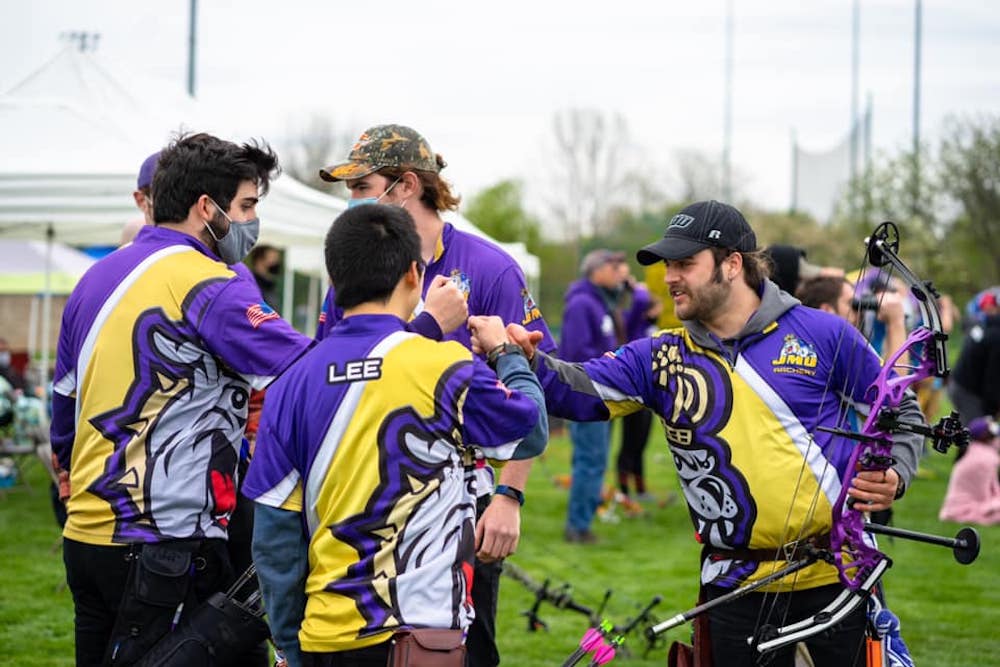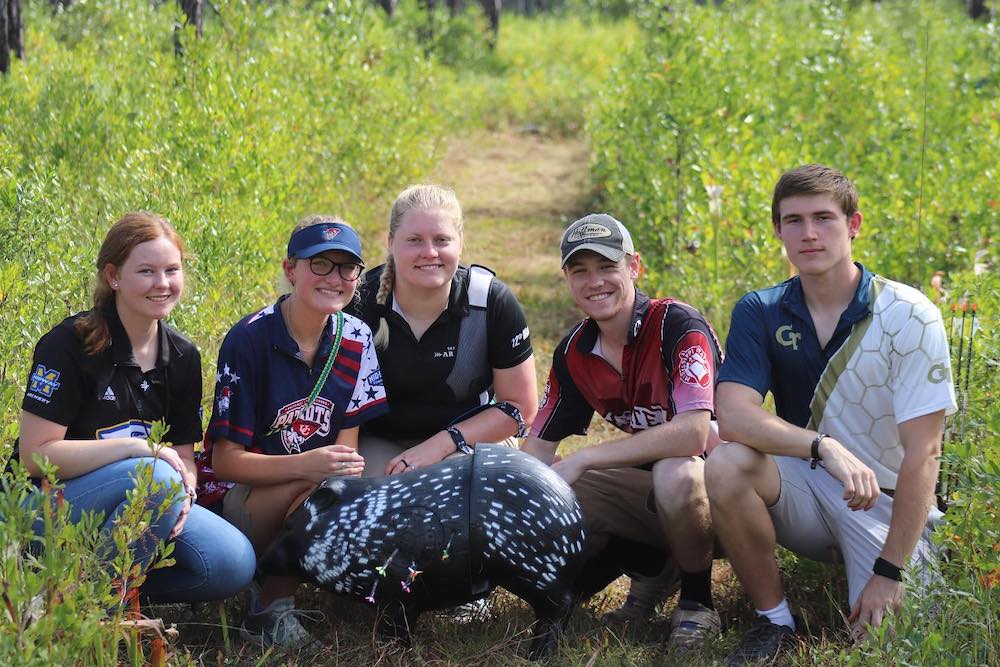If you love archery, don’t give it up just because you graduate high school and outgrow your JOAD program. Competing at the college level can be just as fun, rewarding, challenging and entertaining as participating in your youth club. Not sure if collegiate archery is for you? We spoke to Bob Ryder, assistant coach for the James Madison University archery team, to get the scoop on college archery programs and details.
But first, a quick introduction: Ryder started participating in archery competitions in 1957 and shot on the JMU archery team when he was a student. He began coaching the team in 1992. As the head coach, he has produced 42 All-American archers, 16 national champions, 23 national team titles and 14 world champions. His most recent prodigy was Jacob Wukie. Since then, he’s stepped back into an assistant coach position. He’s still heavily involved in the college archery scene and knows a lot about the history, expectations and layout of archery programs across the country.
History

Bob Ryder, well-respected coach of the JMU archery team, provides insight into the world of collegiate archery. Photo Credit: USA Archery
According to Ryder, there was a big push to include physical education classes in elementary, middle and high schools in the 1960s. As the need for PE teachers rose, colleges started offering more PE majors and exercise classes. They also required their PE students to participate in a varsity sport. If students weren’t good at one of the major sports, like football or basketball, they looked for oddballs like archery and fencing. The students wanted to compare their scores with others, so colleges competed through a mail-in system. After that, things advanced and teams started competing against one another in person. The National Collegiate Athletic Association considered sanctioning archery, but it never got approved and still hasn’t.
Program Details
Because archery isn’t an NCAA sanctioned sport, there are many variations among college programs, including the number of coaches, number of athletes, available archery styles or disciplines to shoot, and where and when students can practice.
“Everything depends on the school,” Ryder said. “Some colleges are all the way to the left and others are all the way to the right (regarding program details). It’s a wide spectrum. Archery is kind of a rogue sport.”
Most collegiate varsity and club archery teams are co-ed and compete under the bylaws of USA Archery. In general, college archery coaches volunteer their time unless the school or program receives grants. Team sizes range from a few archers to more than 50. College archers have four categories to compete in, including barebow, recurve, compound and fixed pin. However, not all colleges have coaches who specialize in each style. Some universities have indoor and outdoor shooting facilities, while others don’t have either. Those schools or athletes usually have agreements with local archery pro shops for a discounted annual range fee.
Surprisingly, some colleges consider bows a weapon and don’t allow students to bring archery equipment on campus. The school can still have an archery team, but athletes are required to practice off campus in those instances. USA Archery works to verify that the athletes attend the university and are in good standing. If so, the individuals can compete independently of the university at the college level.
Lastly, the number of archery events or tournaments a college team participates in depends on finances. The JMU archery team doesn’t receive any university funding, so Ryder and his athletes hold fundraisers and accept donations to raise the money they need to attend events. They usually generate enough to compete in eight to 10 tournaments annually, including USA Archery’s Indoor Nationals and Outdoor Nationals.
Expectations, Pros and Cons

Each college will offer different archery disciplines and tournament styles. Photo Credit: JMU
Depending on your goals, participating in college archery can be a serious endeavor or a fun activity. Some people pursue college archery to advance their skills and compete for honors, but Ryder said it can be as innocent as joining an a cappella group for fun if you like to sing. Let’s learn what else you can expect to encounter from a college archery group.
Some programs have equipment obtained through grants that archers can use. However, if athletes get serious about competition, they usually buy their own equipment, which can be expensive.
Other than that, most athletes enjoy the opportunity to shoot for free or for a discount at local pro shops. They also enjoy the exercise competition archery provides and meeting like-minded people at events and tournaments.
“College archery provides an opportunity to make friendships that last a lifetime,” Ryder said. “If you participate in collegiate archery, eventually you’ll graduate, but so will everyone else competing. Archery is a family for you for the rest of your life because there is no better group of sportsmen than there are in the sport of archery. You help others, and you naturally become well acquainted with your competitors. That’s what makes this sport special.”
The expectations for athletes vary depending on the coach and program. As mentioned above, some programs are very structured and others aren’t. A coach can set minimum practice requirements or simply allow their students to commit whatever they can to practicing, whether that’s a few hours each week, or two hours a day, six days a week.
Many programs also encourage their athletes to get involved in the community. For example, Ryder’s athletes must acquire a certain number of community service hours each year. Those hours can be spent mentoring newcomers, running nearby archery tournaments or assisting with community events.
Picking a School to Attend

Make sure you choose the college that has the right program for you. Photo Credit: USA Archery
College athletics are extracurricular activities, archery included. Because most college athletes won’t advance to the next level of competition, Ryder encourages students to put their academics first.
“The smartest approach for (high school students) is to focus on their education,” he said. “They must think about what they want to do for a living, pick a major and find a school that provides a quality education. If that school has an archery program, great. If not, USA Archery can guide them on a way to participate in collegiate archery. No matter where students go, opportunities in college archery exist.”
The USA Archery website lists 56 universities with an archery team. If the school you picked has a team, Ryder recommended setting up an appointment with the archery coach when you visit the school. During the meet-and-greet, you can discuss program details, equipment options, and practice or community service expectations to determine whether you want to participate. If the school you chose doesn’t have a team, contact USA Archery to work out the logistics of competing at the college level as an individual.
A Note About Archery Scholarships
Many organizations like USA Archery and the National Field Archery Association offer scholarships to students who compete in collegiate archery. Additionally, some individual colleges and universities provide archery scholarships. According to USA Archery, of the 56 colleges with an archery team, 21 have scholarship opportunities. But even if a university has a scholarship, it doesn’t mean that the university’s archery program is robust or flourishing. You must do your homework and ensure the scholarship helps you meet financial goals. Sometimes it’s cheaper to attend a public school without a scholarship than a private school with a scholarship.
For more information about college archery programs, visit the USA Archery collegiate archery webpage.




